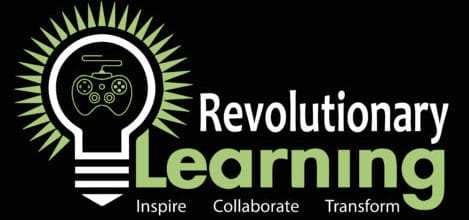David Seelow, PhD©
Just before the holidays I spoke at length with Alex Fleming, Learning Design Manager at Mouse in New York City. Mouse is a nationwide youth organization whose focus is “Technology with Purpose.” Mouse helps students across the country’s vast school population use technology to create projects that solve critical social problems. Technology has always had both positive and negative effects depending upon its application, and often a mixture of effects given the unintended consequences of applied technology. In applying technology to solve real problems and not just churn out money making products Mouse serves youth in a way that really has lasting impact. For example, a recent project prototype resulted in Omni-Joy an accessible, portable game controller to help people with limited mobility. Assistive technology has an area of neglect in commercial game development, so Mouse students help fill an important population of gamers.
Mouse navigates the slippery boundary between formal schooling with its top down test-driven curriculum and the much less restricted possibilities of informal learning. At Mouse, students who participate in Design League run by Maggie Muldoon, take an entire year to work on a project. They work with peers from different districts, but who share common interests creating new learning opportunities formal schools with their monolithic student populations rarely achieve (especially true of the suburban and rural districts). It is a place of discovery where kids can simply explore and find out what clicks with them. Again, formal schools with their rigid artificial schedules often prevent true discovery. In my case, I never took programming in formal classes because my inclinations and talent reside more with the Humanities and I did not feel I could learn much programming in the frame work of a fifteen-week college course let alone a high school course should I be able to magically return to my teenage years. Many years after formal schooling, I have learned to program in C#, Java Script and Python, at least enough to satisfy my curiosity and professional needs. However, I earned these programs slowly, at my own pace, something my formal course work did not allow. I suspect this disjunction between interest and time restricts many students in an unnecessary fashion.
A few other elements of Mouse could benefit our formal K-12 system. Project-based year long learning stresses collaboration and team work not self-interested, test result driven competition. The projects take place in the context of the community not just the school building. The final projects help build self-esteem, which matter as much in youth’s long-term success as their academic aptitude or IQ scores. Finally, Maker Events allow students to create projects and exhibit their work to people other than just parents.
Mouse also offers online courses through their Mouse Create platform and this work can be integrated into the students’ traditional school pathway. Students can earn digital badges that testify to their competency and can be shown to colleges as a value added to the tired old transcript with its 96s and 86s or God forbid- 60s! Moreover, students can earn badges that are recognized by Parsons School of Design much like they would for Advanced Placement tests but based on overall work not a single exam score.
Although STEM plays a leading role in Mouse because of its technology focus, the philosophy of design thinking extends into the Humanities. In fact, design thinking to me is more Humanities centered than science centered, but that’s me. Is a fashion designer an artist or material engineer? He or she must cut and sew and measure and plan, but the designer starts with a vision that the technology and engineering help actualize.
Mouse faces a few challenges. Funding is always an issue when it comes to youth. Our country needs to take education at the K-12 level more seriously in terms of funding and realize the value of youth organizations and informal learning programs which cannot only tap unrealized ability, but help overcome the vast inequity that plagues our formal school system (go north of New York City to Westchester Country or East to Nassau County and you will immediately see inequity in action every school day). A second challenge would be getting district schools involved in this national opportunity. From my own experience, I know innovators are few, and most people resist change, but a single enthusiastic teacher can have a ripple effect across an entire school, so if one teacher joins the program all can benefit. In other words, a call to action is as important as a call to support. Finally, how do you work with kids with such disparate backgrounds and such wide-ranging differences in, for lack of a better word, academic standing? In old day terminology, how does a teacher work with an honors student and a student earning Cs? The solution will never be to isolate them from each other like they did when I went to high school. I was tracked as a middle of the road “B” student, not up to that “A” level standard; I now say this as the only Ivy League graduate in my class. My point being, the stew of students from different schools, neighborhoods, grades, and preparation levels is as much an opportunity as a challenge, and the recipe for such a stew promises gourmet satisfaction.
